Credits: @Decembermin for the 747-261, Original 747-100 made by realSavageMan.
About 747
747-200
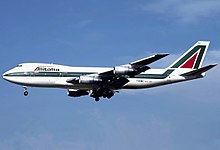
Side view of quad-jet aircraft in flight.
Most 747-200s had ten windows per side on the upper deck
While the 747-100 powered by Pratt & Whitney JT9D-3A engines offered enough payload and range for medium-haul operations, it was marginal for long-haul route sectors. The demand for longer range aircraft with increased payload quickly led to the improved -200, which featured more powerful engines, increased MTOW, and greater range than the -100. A few early -200s retained the three-window configuration of the -100 on the upper deck, but most were built with a ten-window configuration on each side.[154] The 747-200 was produced in passenger (-200B), freighter (-200F), convertible (-200C), and combi (-200M) versions.[155]
The 747-200B was the basic passenger version, with increased fuel capacity and more powerful engines; it entered service in February 1971.[82] In its first three years of production, the -200 was equipped with Pratt & Whitney JT9D-7 engines (initially the only engine available). Range with a full passenger load started at over 5,000 nmi (9,300 km) and increased to 6,000 nmi (11,000 km) with later engines. Most -200Bs had an internally stretched upper deck, allowing for up to 16 passenger seats.[156] The freighter model, the 747-200F, had a hinged nose cargo door and could be fitted with an optional side cargo door,[82] and had a capacity of 105 tons (95.3 tonnes) and an MTOW of up to 833,000 pounds (378 t). It entered service in 1972 with Lufthansa.[157] The convertible version, the 747-200C, could be converted between a passenger and a freighter or used in mixed configurations,[78] and featured removable seats and a nose cargo door.[82] The -200C could also be outfitted with an optional side cargo door on the main deck.[158]
The combi aircraft model, the 747-200M (originally designated 747-200BC), could carry freight in the rear section of the main deck via a side cargo door. A removable partition on the main deck separated the cargo area at the rear from the passengers at the front. The -200M could carry up to 238 passengers in a three-class configuration with cargo carried on the main deck. The model was also known as the 747-200 Combi.[82] As on the -100, a stretched upper deck (SUD) modification was later offered. A total of 10 747-200s operated by KLM were converted.[82] Union de Transports Aériens (UTA) also had two aircraft converted.[159][160]
After launching the -200 with Pratt & Whitney JT9D-7 engines, on August 1, 1972, Boeing announced that it had reached an agreement with General Electric to certify the 747 with CF6-50 series engines to increase the aircraft's market potential. Rolls-Royce followed 747 engine production with a launch order from British Airways for four aircraft. The option of RB211-524B engines was announced on June 17, 1975.[144] The -200 was the first 747 to provide a choice of powerplant from the three major engine manufacturers.[161] In 1976, its unit cost was US$39M (185.7M today).
A total of 393 of the 747-200 versions had been built when production ended in 1991.[162] Of these, 225 were -200B, 73 were -200F, 13 were -200C, 78 were -200M, and 4 were military.[163] Iran Air retired the last passenger 747-200 in May 2016, 36 years after it was delivered.[164] As of July 2019, five 747-200s remain in service as freighters.
British Airways Flight 9
British Airways Flight 009, sometimes referred to by its callsign Speedbird 9 or as the Jakarta incident,[1] was a scheduled British Airways flight from London Heathrow to Auckland, with stops in Bombay, Kuala Lumpur, Perth, and Melbourne.
On 24 June 1982, the route was flown by the City of Edinburgh, a Boeing 747-200 registered as G-BDXH. The aircraft flew into a cloud of volcanic ash thrown up by the eruption of Mount Galunggung around 110 miles (180 km) south-east of Jakarta, Indonesia, resulting in the failure of all four engines. Partly because the event occurred at night, obscuring the cloud, the reason for the failure was not immediately apparent to the crew or air traffic control. The aircraft was diverted to Jakarta in the hope that enough engines could be restarted to allow it to land there. The aircraft glided out of the ash cloud, and all engines were restarted (although one failed again soon after), allowing the aircraft to land safely at the Halim Perdanakusuma Airport in Jakarta.
The crew members of the accident segment had boarded the aircraft in Kuala Lumpur, while many of the passengers had been aboard since the flight began in London.[2]
At the time of the incident, the flight crew of BA009 consisted of 32-year-old Senior First Officer Roger Greaves, 40-year-old Senior Engineer Officer Barry Townley-Freeman, and 41-year-old[3] Captain Eric Henry Moody. The flight crew members had boarded the aircraft at Sultan Abdul Aziz Shah Airport in Kuala Lumpur and were due to pilot the 747 from the Malaysia to Perth Airport leg.
Shortly after 13:40 UTC (20:40 Jakarta time) above the Indian Ocean, south of Java, the crew first noticed an unusual effect on the windscreen similar to St. Elmo's fire, while Moody was heading to the lavatory.[1] Despite the weather radar showing clear skies, the crew switched on engine anti-ice and the passenger seat belt signs as a precaution.
As the flight progressed, smoke began to accumulate in the passenger cabin of the aircraft; it was first assumed to be cigarette smoke. However, it soon began to grow thicker and had an odour of sulphur. Passengers who had a view of the aircraft's engines through the window noted that they were unusually bright blue, with light shining forward through the fan blades and producing a stroboscopic effect.[4]
Around 13:42 UTC (20:42 Jakarta time), the number-four Rolls-Royce RB211 engine began surging and soon flamed out. The flight crew immediately performed the engine shutdown drill, quickly cutting off fuel supply and arming the fire extinguishers. Less than a minute later, at 13:43 UTC (20:43 Jakarta time), engine two surged and flamed out. Within seconds, and almost simultaneously, engines one and three flamed out, prompting the flight engineer to exclaim, "I don't believe it—all four engines have failed!"[4]
Without engine thrust, a 747-200 has a glide ratio of roughly 15:1, meaning it can glide forward 15 kilometres for every kilometre it drops. The flight crew quickly determined that the aircraft was capable of gliding for 23 minutes and covering 91 nautical miles (169 km) from its flight level of 37,000 feet (11,000 m).[4] At 13:44 UTC (20:44 Jakarta time), Greaves declared an emergency to the local air traffic control authority, stating that all four engines had failed. However, Jakarta Area Control misunderstood the message, interpreting the call as meaning that only engine number four had shut down. After a nearby Garuda Indonesia flight relayed the message to them, air traffic control correctly understood the urgent message. Despite the crew "squawking" the emergency transponder setting of 7700, air traffic control could not locate the 747 on their radar screens.
Many passengers, fearing for their lives, wrote notes to relatives.[2]
Owing to the high Indonesian mountains on the south coast of the island of Java, an altitude of at least 11,500 feet (3,500 m) was required to cross the coast safely. The crew decided that if the aircraft was unable to maintain altitude by the time they reached 12,000 feet (3,700 m), they would turn back out to sea and attempt to ditch into the Indian Ocean. The crew began engine restart drills, despite being well outside the recommended maximum engine in-flight start envelope altitude of 28,000 feet (8,500 m). The restart attempts failed.
Despite the lack of time, Moody made an announcement to the passengers that has been described as "a masterpiece of understatement":[4]
Ladies and gentlemen, this is your captain speaking. We have a small problem. All four engines have stopped. We are doing our damnedest to get them going again. I trust you are not in too much distress.[4][5][6]
As pressure within the cabin fell, oxygen masks dropped from the ceiling – an automatic emergency measure to make up for the lack of air. On the flight deck, however, Greaves's mask was broken; the delivery tube had detached from the rest of the mask. Moody swiftly decided to descend at 1,800 m per minute to an altitude where there was enough pressure in the outside atmosphere to breathe almost normally.
At 13,500 feet (4,100 m), the crew was approaching the altitude at which they would have to turn over the ocean and attempt a risky ditching. Although the crew had guidelines for the water landing procedure, no one had ever tried it in a Boeing 747. As they performed the engine restart procedure, engine number four finally started, and at 13:56 UTC (20:56 Jakarta time), Moody used its power to reduce the rate of descent. Shortly thereafter, engine three restarted, allowing him to climb slowly. Shortly after that, engines one and two successfully restarted, as well.[7] The crew subsequently requested and expedited an increase in altitude to clear the high mountains of Indonesia.[8]
As the aircraft approached its target altitude, the St. Elmo's fire effect on the windscreen returned. Moody throttled back, but engine number two surged again and was shut down. The crew immediately descended and held 12,000 feet (3,700 m).
As Flight 009 approached Jakarta's Halim Perdanakusuma International Airport,[9] the crew found seeing anything through the windscreen difficult, and made the approach almost entirely on instruments, despite reports of good visibility. The crew decided to fly the instrument landing system, but the vertical guidance system was inoperative, so they were forced to fly with only the lateral guidance as the first officer monitored the airport's distance-measuring equipment (DME). He then called out how high they should be at each DME step along the final approach to the runway, creating a virtual glide slope for them to follow. Moody described it as "a bit like negotiating one's way up a badger's arse."[1] Although the runway lights could be made out through a small strip of the windscreen, the landing lights on the aircraft seemed to be inoperable. After landing, the flight crew found taxiing impossible, due to glare from apron floodlights, which made the already sandblasted windscreen opaque.
Investigation
Damaged engine parts from BA009 on display at Auckland Museum
Postflight investigation revealed that City of Edinburgh's problems had been caused by flying through a cloud of volcanic ash from the eruption of Mount Galunggung. Because the ash cloud was dry, it did not appear on the weather radar, which was designed to detect the moisture in clouds. The dust in the cloud deprived the engines of sufficient oxygen from the atmosphere to maintain combustion, sandblasted the windscreen and landing-light covers, and clogged the engines. As the ash entered the engines, it melted in the combustion chambers and adhered to the inside of the power plant. As the engine cooled from inactivity, and as the aircraft descended out of the ash cloud, the molten ash solidified and enough of it broke off for air to again flow smoothly through the engine, allowing a successful restart. The engines had enough electrical power to restart because one generator and the on-board batteries were still operating; electrical power was required for cranking and ignition of the engines.
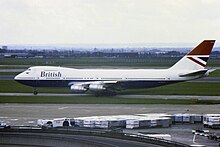
ENJOY!!!!
Specifications
Spotlights
- FlirBlitz 2.3 years ago
- Brololxd 2.3 years ago
- BeeEngineer 2.3 years ago
General Characteristics
- Predecessor Boeing 747-21AC(SCD) Qantas (Martinair)
- Created On Windows
- Wingspan 194.6ft (59.3m)
- Length 232.0ft (70.7m)
- Height 63.7ft (19.4m)
- Empty Weight 250,556lbs (113,650kg)
- Loaded Weight 554,259lbs (251,408kg)
Performance
- Power/Weight Ratio 0.717
- Wing Loading 58.9lbs/ft2 (287.3kg/m2)
- Wing Area 9,417.6ft2 (874.9m2)
- Drag Points 13459
Parts
- Number of Parts 1504
- Control Surfaces 5
- Performance Cost 5,788

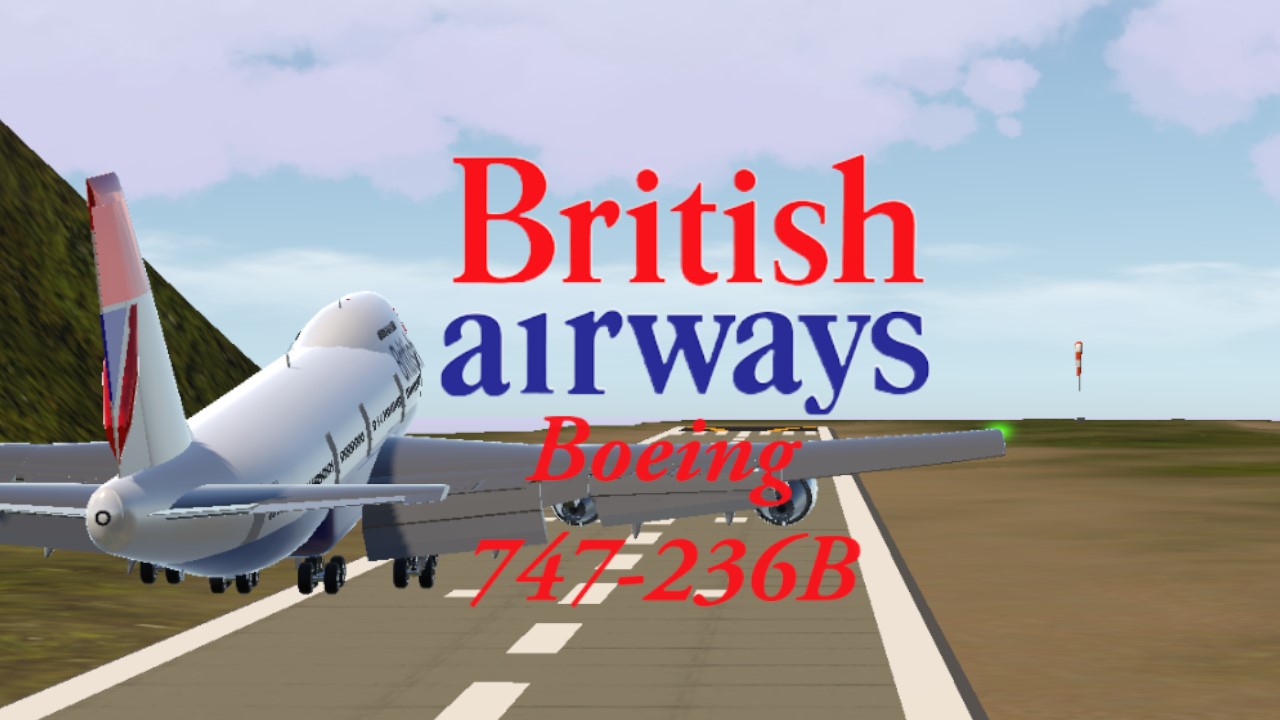
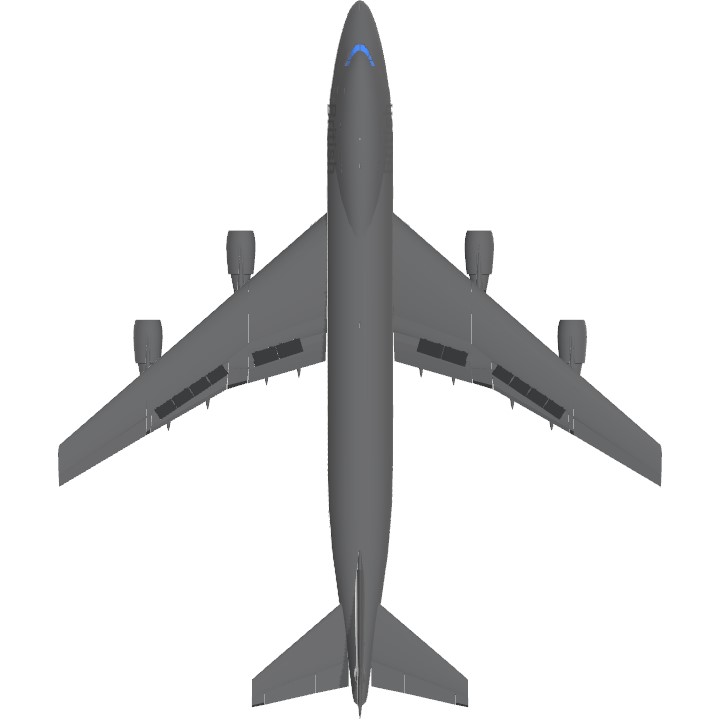
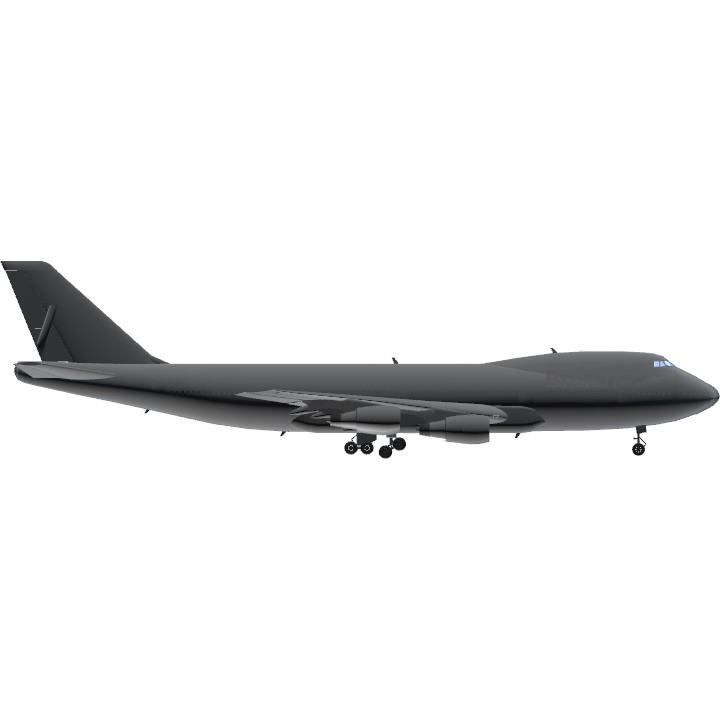
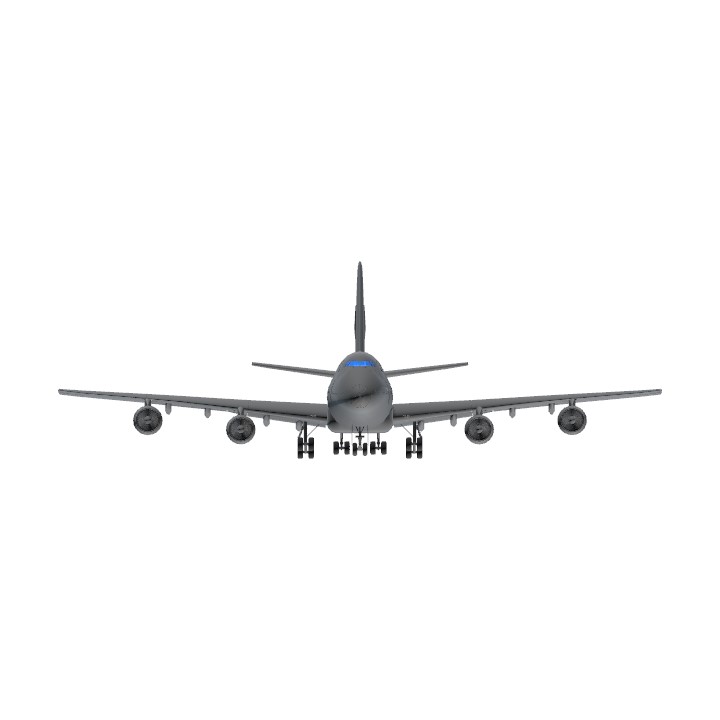
The reason why I edit people's aircraft is
I had to make a choice.
Should I give up because I can't make aircrafts or make liveries of people aircrafts? I choosed making liveries of people aircrafts. I appriciated everyone's help for me.
@NotRandomBuilder8732 That is so cool thank you 😍
@BassemT90 Here's the livery I'm gonna make
@BassemT90 It's hard to make the Alitalia logo. Using IA Image Importer makesit easier but it lags my game.
@NotRandomBuilder8732 thank you so much
@BassemT90 Ok I'll post it tommorow maybe I now can.
@LogoAndCars1 no worries bro
@BassemT90 Bro it's hard to make the alitalia livery. I couldn't make it :c
@LogoAndCars1 much appreciated 🙏🙏
@BassemT90 Estimated upload is tommorow cuz I HAVE SCHOOL AA-
@LogoAndCars1 Thank you so much 🙏🙏
@BassemT90 Ok I will make that next with 1918's 747-200 and IzzyA's image importer.
@LogoAndCars1 Alitalia Boeing 747-200 please. Alitalia didn't operate the 747-400 version
@BassemT90 I could make that next
@BassemT90 Alitalia 747-200? or 400?
Very cool I wish the next one would be the Alitalia Boeing 747 in the picture 🙏
@LogoAndCars1 nvm
@Dallasfrompayday wdym beamng
Retro…
The amount of stabbings on this aircraft is higher than the passenger count
@LogoAndCars1 good story bro